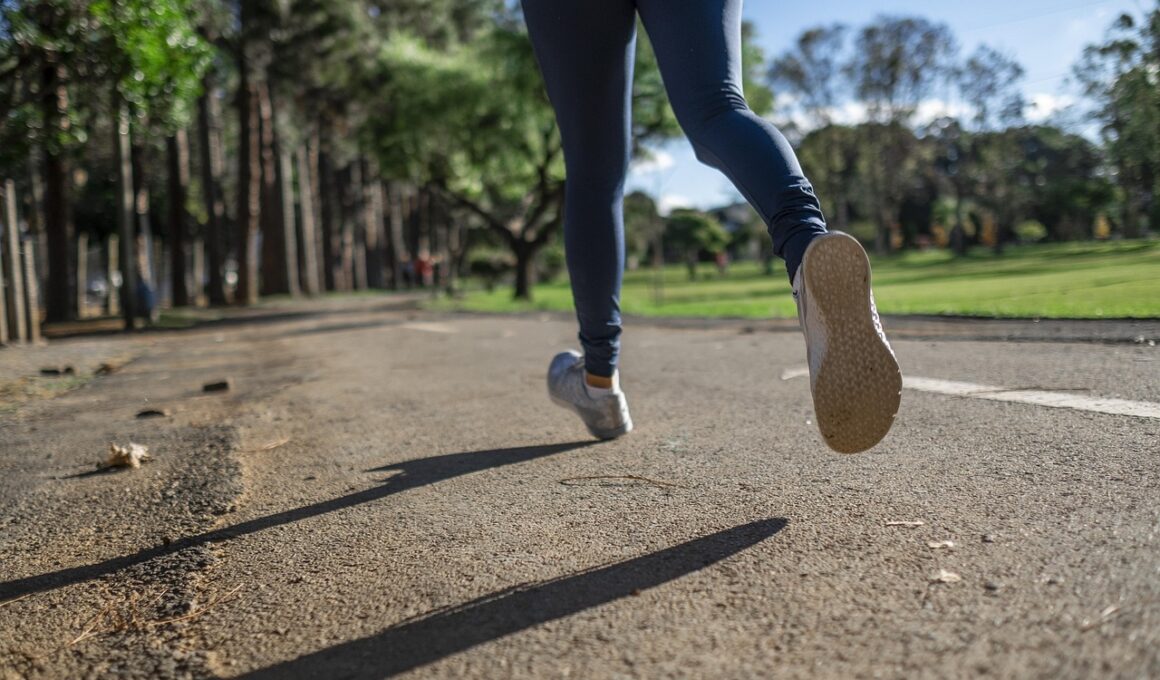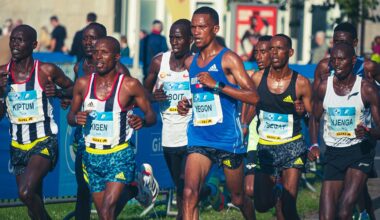Speed and Agility Personal Training Techniques
Speed and agility training is crucial for athletes aiming to enhance their performance. Such training focuses on quickness, acceleration, and maneuverability, all contributing to improved athletic skill sets. These skills are beneficial not only in competitive sports but also in everyday physical activities. Implementing effective speed and agility techniques involves various drills and exercises specifically tailored to develop these attributes. Some of the key components include plyometric exercises like box jumps and speed ladders. Utilizing cones for agility drills helps improve footwork and coordination. Additionally, sprinting drills that emphasize stride length are indispensable for cultivating speed. Adopting a structured personal training program can significantly increase an athlete’s response time and overall efficiency. Furthermore, integrating strength training is also paramount since stronger muscles support quicker, more efficient movements. Factors like proper warm-ups and cooldowns must not be overlooked to prevent injuries. Therefore, focusing on a balanced regimen of speed and agility training enhances an athlete’s ability to perform at their best. Personal trainers play a vital role in tailoring these workouts to their clients’ specific needs, ensuring maximum results. Targeting speed and agility results can lead to improved athletic success.
When designing a speed and agility training session, incorporating specific drills is essential. A well-rounded training session should include a mix of acceleration drills, plyometrics, and agility exercises. Acceleration drills typically consist of short sprints that focus on quick starts. This is important for athletes involved in sports where rapid movements are key, such as soccer or basketball. Plyometric exercises like jump squats can enhance power generation, which translates into better acceleration and speed. Agility drills can take various forms, such as using agility ladders or cone drills to develop foot speed and coordination. These ladders help improve the pattern of movement, making athletes quicker on their feet. Furthermore, it is vital to include a cooldown period post-training to aid muscle recovery. Stretching and low-impact activities help maintain flexibility and reduce soreness. Consistency in executing these drills is crucial for athletes to see significant improvements in their performance. A well-planned personal training program can provide much-needed structure and progression. This helps athletes avoid plateauing while continuously challenging themselves. Results may vary based on the individual athlete’s commitment and the guidance of a skilled trainer.
Importance of Technique in Speed and Agility Training
Mastering the correct technique is fundamental in speed and agility personal training. This is vital because improper form can lead to injuries and hinder performance improvements. Coaches often emphasize the importance of maintaining proper body alignment and utilizing effective footwork patterns during drills. For instance, in sprinting, maintaining an upright posture allows for better airway functionality and improved oxygen flow. Similarly, executing agility drills with correct foot placement fosters quicker transitions and more explosive movements. An athlete’s ability to change direction quickly is dependent on how well they can control their center of gravity. To enhance efficiency, trainers might incorporate video analysis during training sessions. This visual aid helps athletes identify their strengths and weaknesses, enabling informed adjustments to be made. Repetition of drills under the supervision of a skilled trainer ensures that the athlete develops muscle memory better aligned with optimal techniques. The trainer can provide real-time feedback, making necessary corrections to form. Thus, the focus should be on quality rather than quantity, fostering a training environment conducive to improvement. Ultimately, mastery of technique leads to enhanced athletic performance and reduced risk of injury.
Another crucial aspect of speed and agility training involves incorporating variety to keep athletes engaged. Varied workouts prevent monotony and can improve motivation levels among participants. Switching between different drills or modifying established ones creates stimulating challenges. For instance, varying agility ladder workouts by changing foot patterns can engage different muscle groups while mixing entry angles can keep things from becoming stale. Trainers often encourage the inclusion of competitive elements to simulate real-game situations, challenging athletes further. Relay races or timed obstacle courses inspire a spirit of competition, pushing everyone to do their best. Additionally, while individual drills are fundamental, team-based agility activities can promote communication and synergy among athletes. This helps blend both speed and teamwork essential for collective sports performance. Furthermore, implementing corrective feedback during varied sessions helps refine skills efficiently. By mixing low-intensity and high-intensity drills, athletes can experience both active recovery and intensified training. Maintaining a balance between effort levels ensures optimal performance without overtraining. An effective program emphasizes an enjoyable learning experience to sustain athlete interest while yielding the desired results, highlighting the advantages of personal training.
Building a Training Schedule for Speed and Agility
Designing a comprehensive training schedule is crucial for maximizing speed and agility improvements. Typically, a balanced approach is encouraged, mixing training intensity and rest days. A standard schedule may include high-intensity sessions targeting sprints, followed by lighter days focused on endurance or recovery. Training might incorporate agility drills aimed at enhancing reaction times interspersed with power-building exercises like Olympic lifts. It is vital to ensure different muscle groups receive adequate attention throughout the week to prevent fatigue. Scheduling recovery periods allows athletes to heal effectively and be ready for subsequent workouts, thereby maximizing growth potential. Tracking progress through notes or apps helps athletes remain accountable and motivated. They can visually learn which areas need further development while distinguishing days when they excel. Some might prefer working with a personal trainer to maintain structure while receiving expert guidance on adjustments. Regular assessments measuring speed and agility can inform necessary adjustments to the schedule. These evaluations also enhance an athlete’s focus on achieving set goals. Ultimately, a well-planned training regimen can produce remarkable results for speed and agility performance in various athletic domains.
Nutritional support plays an integral role alongside training regimens for speed and agility optimization. Athletes need a diet rich in nutrients, proteins, carbohydrates, and healthy fats to fuel their rigorous training sessions. Proper nutrition aids in muscle recovery, energy levels, and overall well-being. For instance, post-workout meals should focus on protein sources like chicken or fish alongside carbohydrates to replenish muscle glycogen. Hydration is equally essential, as even slight dehydration can impair performance. Athletes must ensure adequate fluid intake during training, especially in high-intensity sessions. Consulting with a nutritionist can help tailor dietary plans to individual needs and training transitions. Additionally, certain supplements can support explosive power, but should be utilized cautiously and under professional supervision. Adopting a balanced meal plan provides a sustainable approach allowing for peak performance in speed and agility drills. Lastly, mindfulness of individual dietary tolerances and preferences promotes long-term adherence, ensuring consistency across training weeks. Combined with a structured training program, effective nutrition enhances overall athletic potential. Therefore, a committed approach to diet reflects highly on an athlete’s response to speed and agility training methodologies.
Evaluating Progress in Speed and Agility Training
Regular assessment of training outcomes is crucial to ensure athletes are advancing effectively. This evaluation process can include timed sprints over various distances to measure improvements in speed metrics. Additionally, agility assessments could encompass shuttle runs or T-drills, which offer insights into lateral quickness and reaction times. Feedback should be constructive, focusing on areas where improvement is observed and pinpointing specific areas that may require more attention. Establishing periodic goals fosters motivation while giving athletes benchmarks to strive for. Personal trainers can utilize testing records to adjust training plans according to individual progress, ensuring sessions remain challenging yet achievable. Variations in performance levels should also influence future training priorities. If an athlete noticeably excels in certain drills, trainers might focus more on challenging their agility or introducing advanced techniques. Analogous to sport-related competitions, implementing periodic progress events can further encourage athletes to push their boundaries. This not only strengthens the drive for improvement but also nurtures a competitive spirit. Ultimately, consistent progress evaluations enhance training effectiveness, ensuring athletes journey toward achieving their speed and agility goals.


